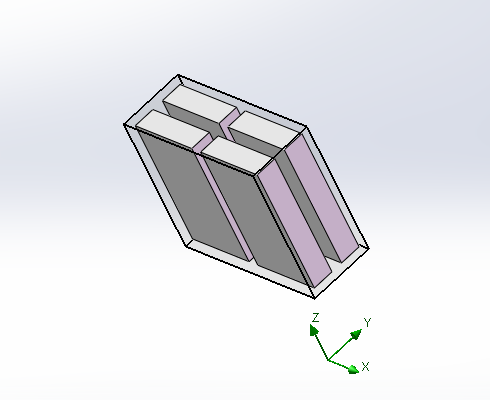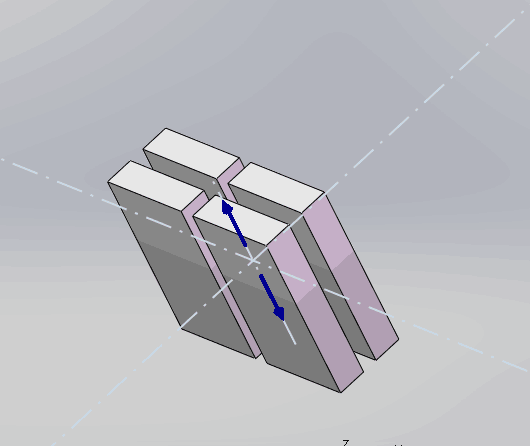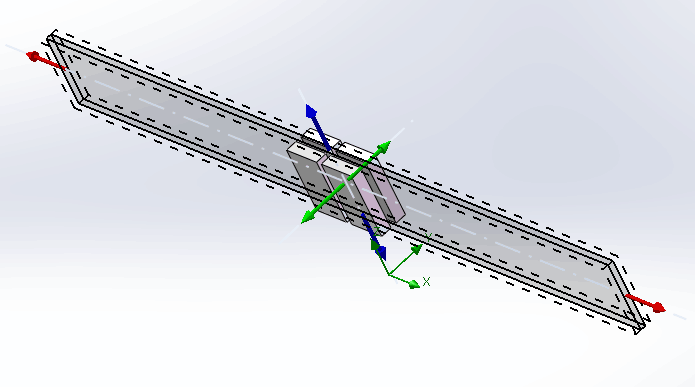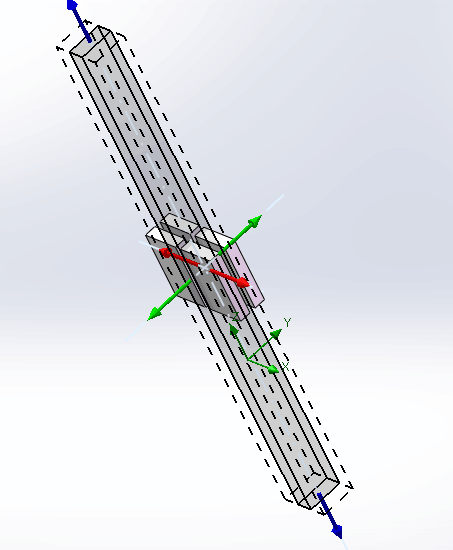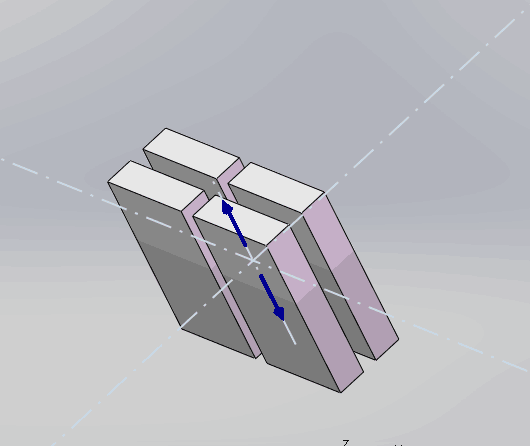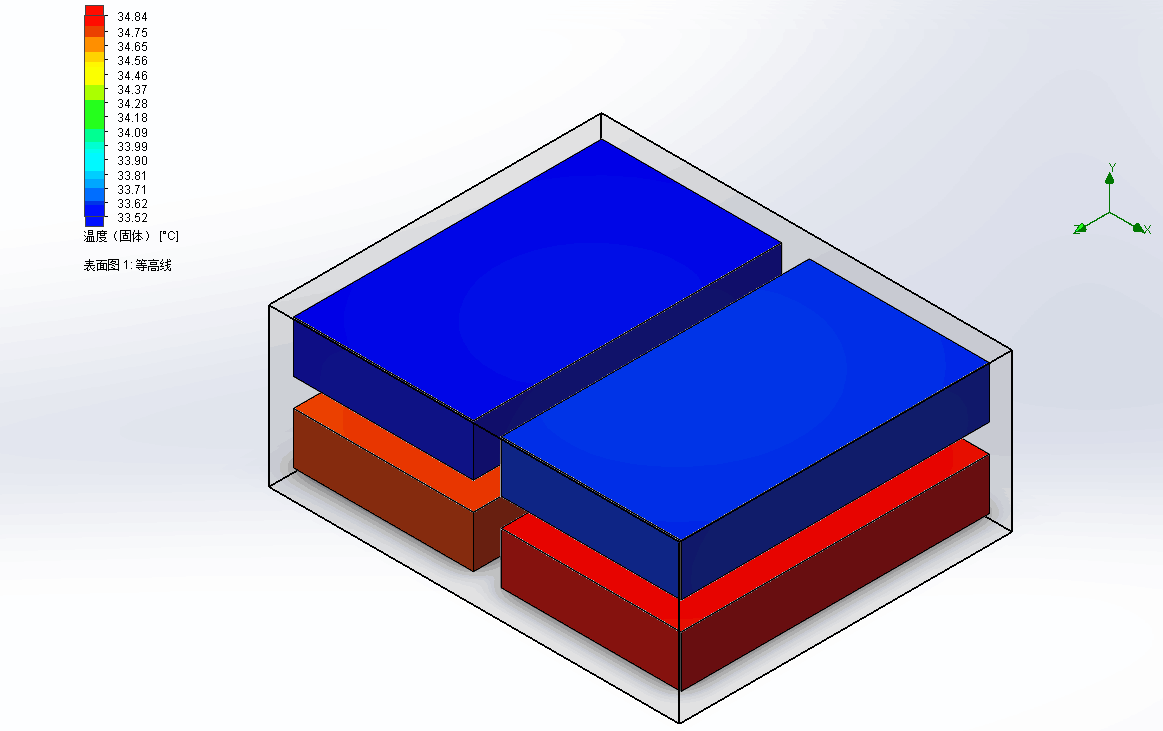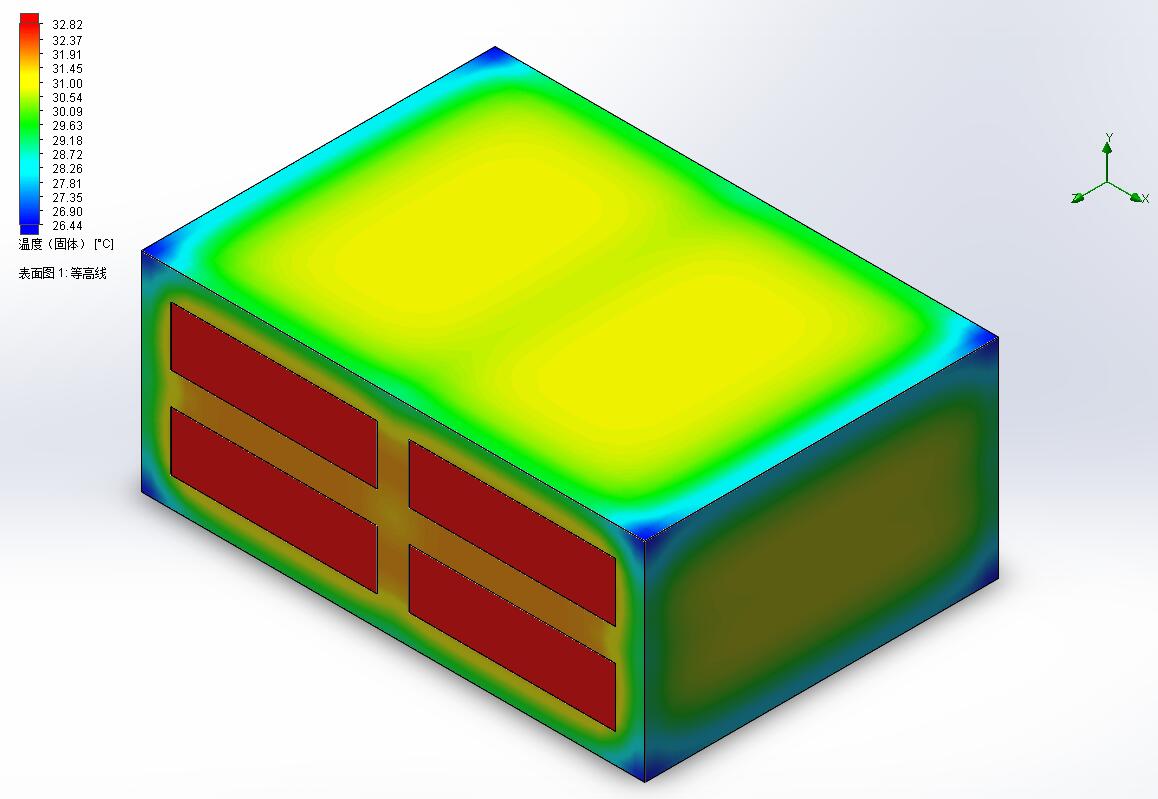电动汽车锂离子电池的散热毕业论文
2020-02-17 07:02
摘 要
近年来,传统汽车的不断发展不仅仅给人类带来了福利,同时也带来了不少的麻烦。一方面,传统汽车会排放大量的废气及有害气体,对环境污染严重;另一方面,由于传统汽车主要以柴油和汽油作为燃料,而石油、煤炭等都是不可再生资源,这些年的大量使用使不少资源已经到了接近匮乏的地步。而我国在这些年来,汽车行业迅猛发展,汽车的保有量已经高居世界第一,也已经成为了世界第二大石油消耗国。然而,中国的石油的产出量完全没法满足对石油的需求量,需要大量石油进口。同时,前些年国内雾霾天气严重,空气污染甚至已经到了严重污染的地步,这其中很大一部分原因就是汽油和柴油的过度消耗。
从某种意义上来说,电动汽车的发展及普及可以改善现阶段环境污染问题以及能源枯竭问题。然而由于电动汽车的技术还不够完善,在现阶段电动汽车还是存在很多问题,因而暂时还无法普及于汽车市场。比如,作为电动汽车的主要供能来源,电池在高温之下不仅会导致寿命变短,电功率降低,严重情况下还会产生不小的安全隐患。本文就这一问题,将讨论电动汽车锂离子电池利用相变材料进行散热。
锂离子电池的工作原理大致为锂离子在电池正负极之间脱落和镶嵌,在这个过程中会产生热量,有几种不同的传热方式,可能会产生反应热、副反应热、焦耳热、极化热等多种不同热量,而本课题要做的研究便是限制锂离子电池产热过多。
根据热力学的几个基本定律和电池的基本产热理论,可以研究出锂离子电池的散热方法。
电动汽车锂离子电池的散热方式分为多种,包括风冷、水冷、相变材料散热等等,几种散热方式各有利弊。笔者在对比分析各种方式之后,决定选用相变材料作为电动汽车锂离子电池的散热介质,并以此讨论电动汽车锂离子电池的散热。
选定温度范围、初始条件和边界条件后,本文选用SolidWorks软件先对单体电池进行建模和网格分析,在对整个电池包进行建模,用SolidWorks的flow simulation插件对锂离子电池包进行仿真并得出结果,以完成对锂离子电池的散热的要求。
关键词:电动汽车;锂离子电池;相变材料;电池散热
Abstract
In recent years, the continuous development of traditional cars has not only brought benefits to human beings, but also brought a lot of trouble. On the one hand, traditional cars emit a large amount of exhaust gas and harmful gases, which are serious to the environment; on the other hand, because traditional cars mainly use diesel and gasoline as fuel, and oil and coal are non-renewable resources, they are used in large quantities in these years. A lot of resources have reached the point of being close to scarcity. In the past few years, the automobile industry has developed rapidly, and the number of cars has been ranked first in the world. It has also become the world's second largest oil consumer. However, China’s oil output is completely unable to meet the demand for oil and requires a large amount of oil imports. At the same time, domestic smog weather was severe in the past few years, and air pollution has even reached the point of serious pollution. A large part of this is due to excessive consumption of gasoline and diesel.
In a sense, the development and popularization of electric vehicles can improve environmental pollution problems and energy depletion at the current stage. However, because the technology of electric vehicles is still not perfect, there are still many problems in electric vehicles at this stage, so it is not yet popular in the automobile market. For example, as the main source of energy for electric vehicles, the battery will not only lead to shorter life, but also lower electric power. In severe cases, there will be no small safety hazards. In this paper, we will discuss the use of phase change materials for heat dissipation in electric vehicle lithium-ion batteries.
The working principle of lithium-ion battery is roughly that lithium ion is detached and inlaid between the positive and negative electrodes of the battery. In this process, heat is generated. There are several different heat transfer modes, which may generate reaction heat, side reaction heat, and Joule heat. A variety of different heats, such as polarization heat, and the research to be done in this topic is to limit the excessive heat production of lithium-ion batteries.
According to several basic laws of thermodynamics and the basic heat production theory of batteries, the heat dissipation method of lithium ion batteries can be studied.
The cooling methods of lithium-ion batteries for electric vehicles are divided into various types, including air-cooling, water-cooling, phase-change materials, etc. Several heat dissipation methods have their own advantages and disadvantages. After comparing and analyzing various methods, the author decided to use phase change materials as the heat dissipation medium for lithium-ion batteries for electric vehicles, and discussed the heat dissipation of lithium-ion batteries for electric vehicles.
After selecting the temperature range, initial conditions and boundary conditions, this paper selects the SolidWorks software to model and analyze the single cell first. The whole battery pack is modeled, and the lithium-ion battery pack is used with the flow simulation plug-in of SolidWorks. The simulation was performed and the results were obtained to complete the heat dissipation requirements for the lithium ion battery.
Keywords:electric vehicles;Li-ion battery;phase change material;battery cooling
目录
第1章绪论 1
1.1 研究背景 1
1.2 课题研究的目的、内容与意义 2
1.2.1 目的及内容 2
1.2.2 课题研究的意义 3
1.3 主要研究方法 3
1.4 国内外研究现状 3
1.5 本文的创新点 4
1.6 本章小结 4
第2章电动汽车锂离子电池散热概述 5
2.1 纯电动汽车概述 5
2.1.1 纯电动汽车的定义 5
2.1.2 纯电动汽车国内外发展现状 5
2.2 动力电池的类型与要求 5
2.3 动力电池发展历程 6
2.4 电动汽车锂离子电池简介 7
2.4.1 锂离子电池构成 7
2.4.2 锂离子电池工作原理 8
2.4.3 锂离子电池结构 8
2.4.4 锂离子电池主要性能参数 9
2.5 锂离子电池温度特性 10
2.6 锂离子电池热失控的成因 10
2.7 锂离子电池热量过高的危害 10
2.8 锂离子电池散热的几种主要方式 11
2.9 锂离子电池热管理研究现状 14
2.10 锂离子电池热分析理论 14
2.10.1 传热的形式 14
2.10.2 电池产热理论 16
2.10.3 传热过程简介 17
2.11 本文选择的冷却方式 17
2.12 本章小结 17
第3章锂离子电池模型建立 18
3.1 SolidWorks软件介绍 18
3.2 锂离子电池建模仿真 18
3.2.1 单体电池建模 18
3.2.2 初始条件设定 18
3.2.3 锂离子电池模型建立 19
3.2.4 流体子域设定 22
3.2.5 边界条件 23
3.2.6 全局网格设置 24
3.2.7 单体电池体积热源 25
3.2.8 目标 25
3.3 本章总结 26
第4章相变材料散热的仿真结果 27
4.1 相变材料的选择及仿真准备 27
4.2 温度分布仿真 28
4.3 锂离子电池工作温度的分布图 29
4.4 本章小结 32
第5章总结与展望 33
5.1 总结 33
5.2 展望 34
第6章致谢 35
第7章参考文献 37
绪论
研究背景
随着经济的不断发展,我国的汽车行业同样也不断壮大。自20世纪80年代以来,个人汽车在中国出现。 2003年社会用车数量为1219万辆。 私家车数目在1000万辆之内持续了大约20年,而仅仅3年就超过了2000万辆,到了2016年我国拥有了19440万辆民用汽车(包括381万辆三轮汽车和低速卡车)。我国拥有1565.95万辆私家车和1.876亿辆汽车,如图1.1所示。汽车行业迅猛发展的同时,不仅给人们带来了便利,也带来了不少的麻烦。
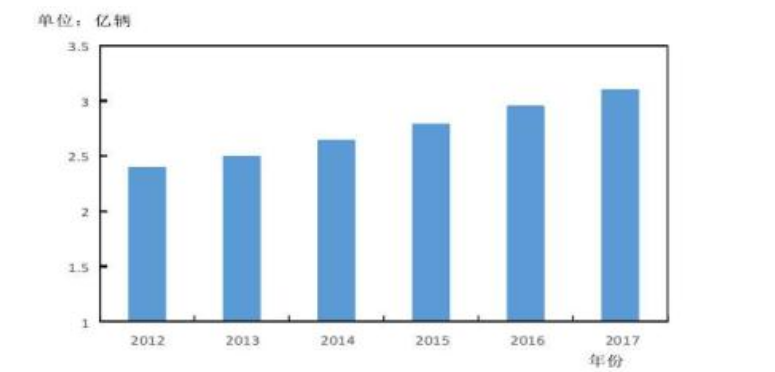
图1.1汽车保有量变化趋势
首先,传统汽车排放的尾气含有大量的碳氢化合物、氮氧化合物、一氧化碳、二氧化硫、含铅化合物、苯并芘及固体颗粒物等,且会产生光化学烟雾,不仅会产生温室效应,破坏臭氧层,产生酸雨、黑雨等现象,还对人体健康有很大的威胁,严重损害呼吸息彤,甚至可能致癌。前些年,全国大部分地区遭受的雾霾污染很大一部分原因便是汽车尾气的排放。根据国家环保局的数据,在北京,大气污染物中有大约40%的一氧化碳、75%的碳氢化合物和接近半数的氮氧化合物是由传统汽车的尾气导致的。
另一方面,由于传统汽车主要以柴油和汽油作为燃料,随着汽车保有量不断增加,汽车市场对石油的需求量及消耗量也越来越大。而我国石油资源匮乏,需要不断从国外引进石油,致使石油对外依存度增加。《国内外油气行业发展报告》指出示,我国石油进口量持续增长,且石油对外依存度直逼警戒线,甚至达到了59.5%;2016年中国石油消耗量已高达5.56亿吨,但是中国的原有产量却大幅下跌;由此看来,中国石油的对外依存度还会上涨。另外,由于石油不断被大量开采,石油的保有量也在逐年下降,据估计,剩余的石油最多只能被继续开采40到50年,能源危机已迫在眉睫。
面对这种情况,用电动汽车逐步代替传统汽车成为了解决空气污染及能源枯竭的重要途径之一。电动汽车以绿色能源--电能作为主要能源,不会产生有害的气体,则自然不会出现大气污染问题。而且,电动汽车噪声小,大量降低了噪音污染。另一方面,电力可以由多种不同的能源转化,如风能、水能、太阳能、潮汐能、核能等,比起基本只能从不可再生资源中获取能量的传统汽车基本不需要担心能源枯竭的问题。即使电动汽车的电能全部来自于火电发电厂,其整体的能量利用效率也远远高于传统汽车;换言之,使用电动汽车还是大大减少了对不可再生资源的消耗量。
除此之外,电动汽车更有能量转化率高、方便维修、经久耐用、适用范围广泛、不过分受环境影响等多个优点,再加上国家政策的大力支持,将电动汽车一步步取代传统汽车是接下来所有汽车行业从业者所必须研究的重中之重。
然而,与此同时,我们也不得不认识到,电动汽车在现阶段还存在不少技术性问题,这使得电动汽车目前还难以在汽车市场上得以普及。例如,电动汽车目前续航里程短、充电时间长、配套设施不完善、电池发热等问题都在等待我们解决。
课题研究的目的、内容与意义
目的及内容
本文期望完成以下目标:
(1)当下国内外电动汽车的研究阶段及大环境
(2)锂离子电池的主要种类及简介
a.液体锂离子电池(LIB)的简介
b.聚合物锂离子电池(LIP)的简介
(3)对锂离子电池的冷却方式进行对比与选择,分析各种冷却方式的优缺点
a.风冷散热的优点与缺点
b.水冷散热的优点与缺点
c.直冷散热的优点与缺点
d.相变材料散热的优点与缺点
e.各种散热方式的优缺点对比
(4)锂离子电池相变材料散热所采用的材料的对比与确定
a.有机相变材料散热的优缺点
以上是毕业论文大纲或资料介绍,该课题完整毕业论文、开题报告、任务书、程序设计、图纸设计等资料请添加微信获取,微信号:bysjorg。
相关图片展示:
